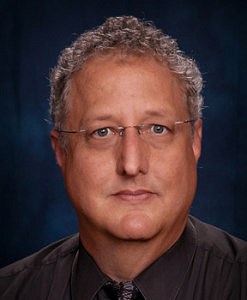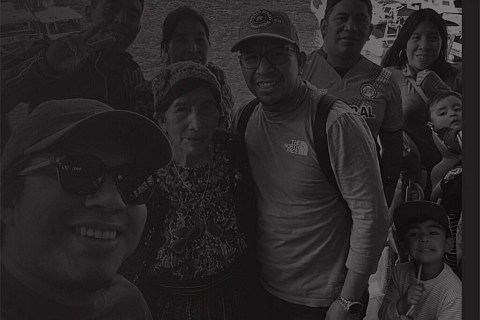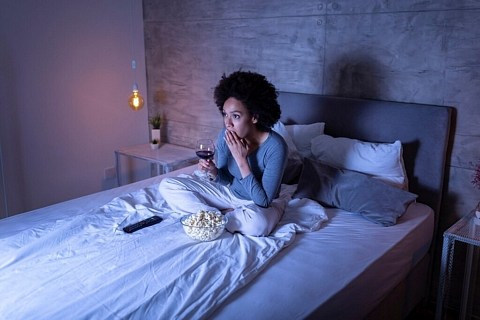 Professor Carson clicks through the slideshow of photographs that feature Ted Cruz, Donald Trump and many others from his collection on the Reuters website.
Professor Carson clicks through the slideshow of photographs that feature Ted Cruz, Donald Trump and many others from his collection on the Reuters website.
“I still do a little bit of news photography for Reuters and AP,” Carson said. “I shot the Republican debate for Reuters. I shot the first 90 seconds of the debate in the music hall, and then the candidates when they came through after.”
For Richard Carson, it is just another day for the professor. He doesn’t just teach photography — he is also a full-fledged photojournalist who actively works outside the University of Houston’s walls. Just this semester, his photos of the Republican Debate were published on national news outlets.
“I do a lot of stuff for the city of Houston,” he said. “I do all of their events. I do the Mayor’s holiday. I did the official portraits of Mayor Parker for both of her terms. Then I did the official portrait for Mayor Turner.”
Carson’s profile on Reuters website has multitude of photos that all focus on the city of Houston. Some photographs featured are speeches, headshots and photos of the Houston skyline.
Carson got his bachelor’s in photography and journalism in 1979, but only recently has his passion for teaching melded with his love for photography.
“I started photography when I was at the (Houston) Chronicle,” Carson said. “So, for many years the University of Houston had someone teach the photojournalism class that was a Chronicle staff photographer. He got tired of doing it and decided he didn’t want to do it anymore. So, he asked me if I was interested.”
Carson said he enjoys the experience of being a teacher and getting to interact with students at the school.
“I guess I like meeting the students, and it keeps me in touch,” Carson said. “I just do it because I enjoy it. But I’m still a photographer. That’s my major, main job.”
And Carson is still actively involved in photography, a career that’s taken him to many different places. According to his official website, Carson has photographed major news and sporting events including the Superbowl, World Series, NBA Finals, U.S. Open Tennis, Summer and Winter Olympics.
“When I was at the Chronicle I got to travel a pretty good bit,” Carson said. “I got to go to Latin America a lot. But now it is more about making a living. I like being at home now, it’s nice.”
Carson said that being a part-time teacher at the university and staying in the local area is something he enjoys.
“As I’ve gotten older, I like things that are shorter duration,” he said. “I now like things that are a couple hours at most. The local election stuff takes way more hours, but it is exciting that you are around the newsmakers.”
But now Carson’s main focus is to help students create well-constructed photographs and give students real life skills.
“Some people might not find it so interesting,” Carson said. “But I work in the business, so I want to try and give people some real world experience or idea of what you might do in the business.
But Carson said it is up to students to get interested and involved in the photography process.
“It’s up to the individual student, really,” Carson said. “I can only sit there and talk about it so much. You have to get out and actually do it, and you have to learn and do better.”
For media production senior Ashley Rivers, Carson’s mixture of being both a professor and photographer gives him an interesting advantage over other photojournalism professors.
“I think what makes him a good professor is that he’s had the real world experience that allows him to have insight into different parts of photojournalism,” Rivers said. “He just isn’t a teacher. He really has a passion for photojournalism, not just taking pictures as a hobby. He loves being in the action and getting the picture of the decisive moment.”
Broadcast journalism junior Rebekah Henry said Carson’s friendly attitude makes him a relaxed professor.
“He’s just really personable, and he’s easy to get along with,” Henry said. “He’s like talking to a friend, which makes assignments easier to understand. You feel more comfortable around him. I think it validates him being a professor to where I am actually interested and intrigued by what he has to say.”
Carson said that he wants students to know their cameras. The photojournalist said that students must be aware of light and the camera’s controls.
“I want students to be smarter than their camera — to know the technical things that the camera does,” Carson said. “I want them to be able to think and see creatively. It’s not an overnight process or something you can do real quickly, to learn to be able to see light.”
Carson also said that a photographer has to be able to see the way light changes pictures, and to be able to look for the perfect moment to snap the picture.
“A good photographer needs to see how light affects what a picture looks like,” he said. “To be able to look for or see the decisive moment. To be able to have some skills that they can build on because experience is really important in photography and you have a lot of it to get better at taking pictures. I want students to be able to make a well-light, well-composed photo that tells a story.”
Public relations junior Erica Lee said that Carson cares about his students and their success. He wants to see them succeed.
“Carson is a professor who actually wants the best for his students,” Lee said. “He is not a teacher who just throws assignments at you, all his work has meaning and purpose behind it. Carson wants you to know your camera and create beautiful photographs.”
However, Christy Ho, a public relations junior, was not impressed with Carson’s class.
“I took Carson’s class last year, so maybe he changed the structure,” Ho said. “When I took his class, I only barely learned how to use a camera. I wish that the class would have been more interactive. I just had higher hopes for what I personally would learn.”
Carson ultimately said that his favorite aspect of photography is capturing something in the moment. He said he hopes he can pass on that passion to students.
“Photography is like a performance. It’s live, it’s something that’s happening and you’re focused on capturing what is going on,” Carson said. “I can only hope to make that part of photography interesting to students.”




Recent Comments